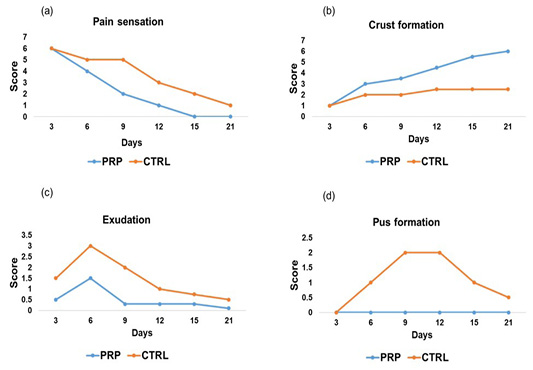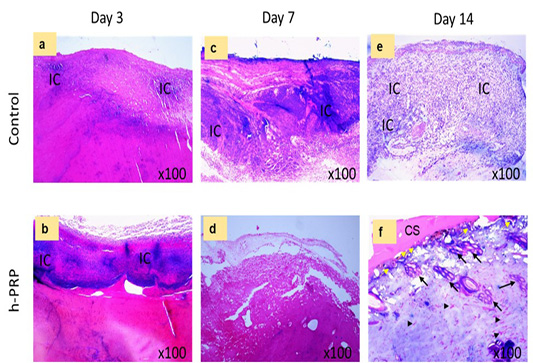Therapeutic Effect of Heterologous Platelet-Rich Plasma on Third-Degree Burn Wound in Rabbits
Therapeutic Effect of Heterologous Platelet-Rich Plasma on Third-Degree Burn Wound in Rabbits
Kazi Afsana Homayra Orchy1, Mst. Antora Akter1, Nelema Yesmin1, Md. Moshiur Rahman Khan1, Marzia Rahman2, Md. Mahmudul Alam1*
Morphological evaluation of burn wound over the observation days. (a) pain sensation, (b) crust formation, (c) exudation, (d) pus formation. Each of the macroscopic characteristics was arbitrarily assessed and scored by more than two observers, and the mean value is shown here.
Wound morphometry. (a) Macroscopic examination of the wound edge contraction process in hPRP-treated wounds and NS-treated wounds at all time points, (b) the wound contraction study. The linear increase in the contraction percentage of the control group and the group treated with hPRP gel on the observation days. (c) Complete healing time in both groups (Mean value). T-test ** indicates P<0.01.
Histological sections of the healing of burn wound at 3, 7, and 14 DPB. The re-epithelialization process was completed in the hPRP-treated groups at 14 DPW. Moreover, rejuvenation of the skin appendages such as hair follicles was seen in the hPRP-treated groups at 14 DPB (Arrow). CS: crusty scab, IC: inflammatory cells, arrowheads: rejuvenation of hair follicles, yellow arrow: re-epithelialization. H&E stain, magnification x100.










